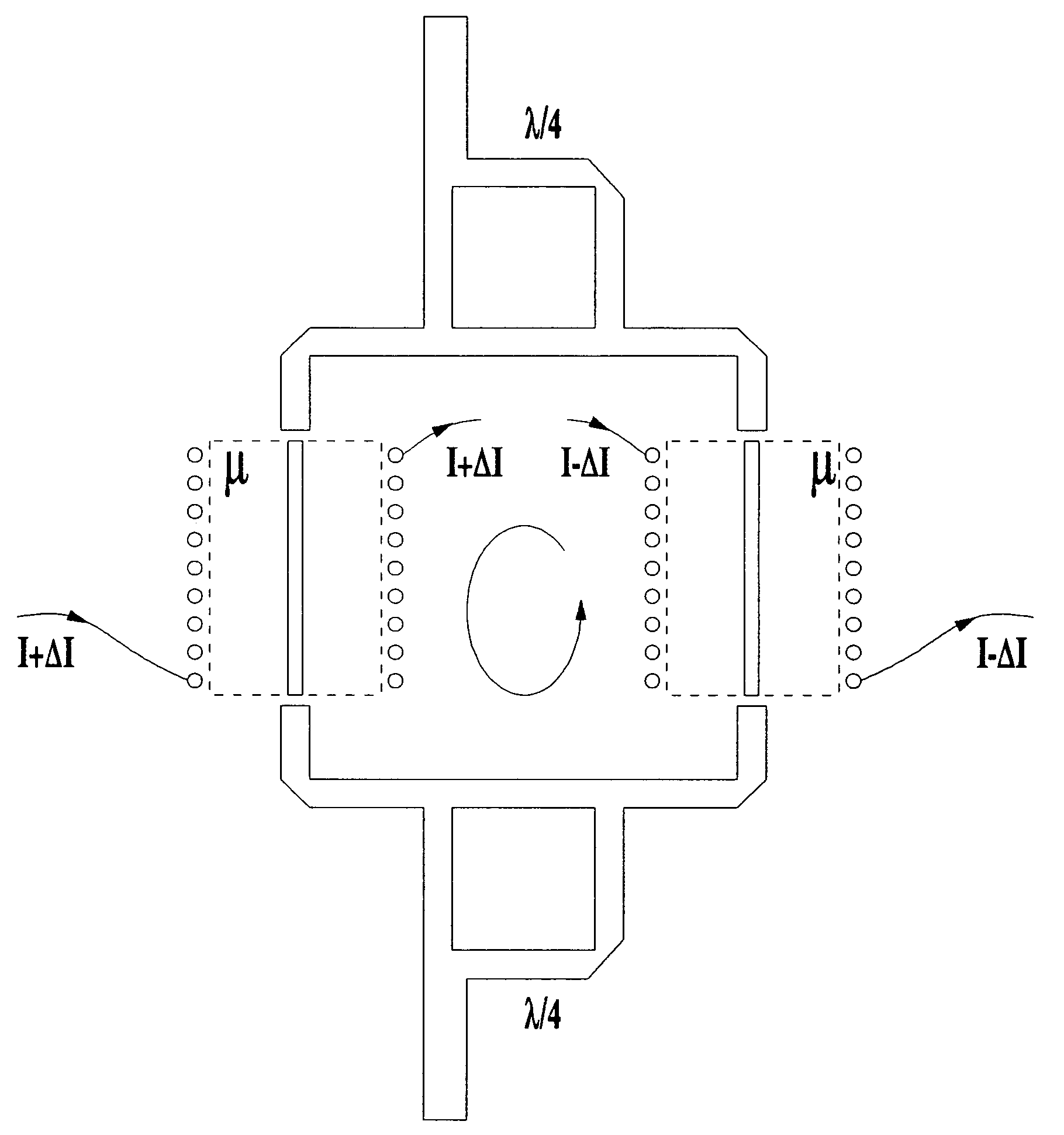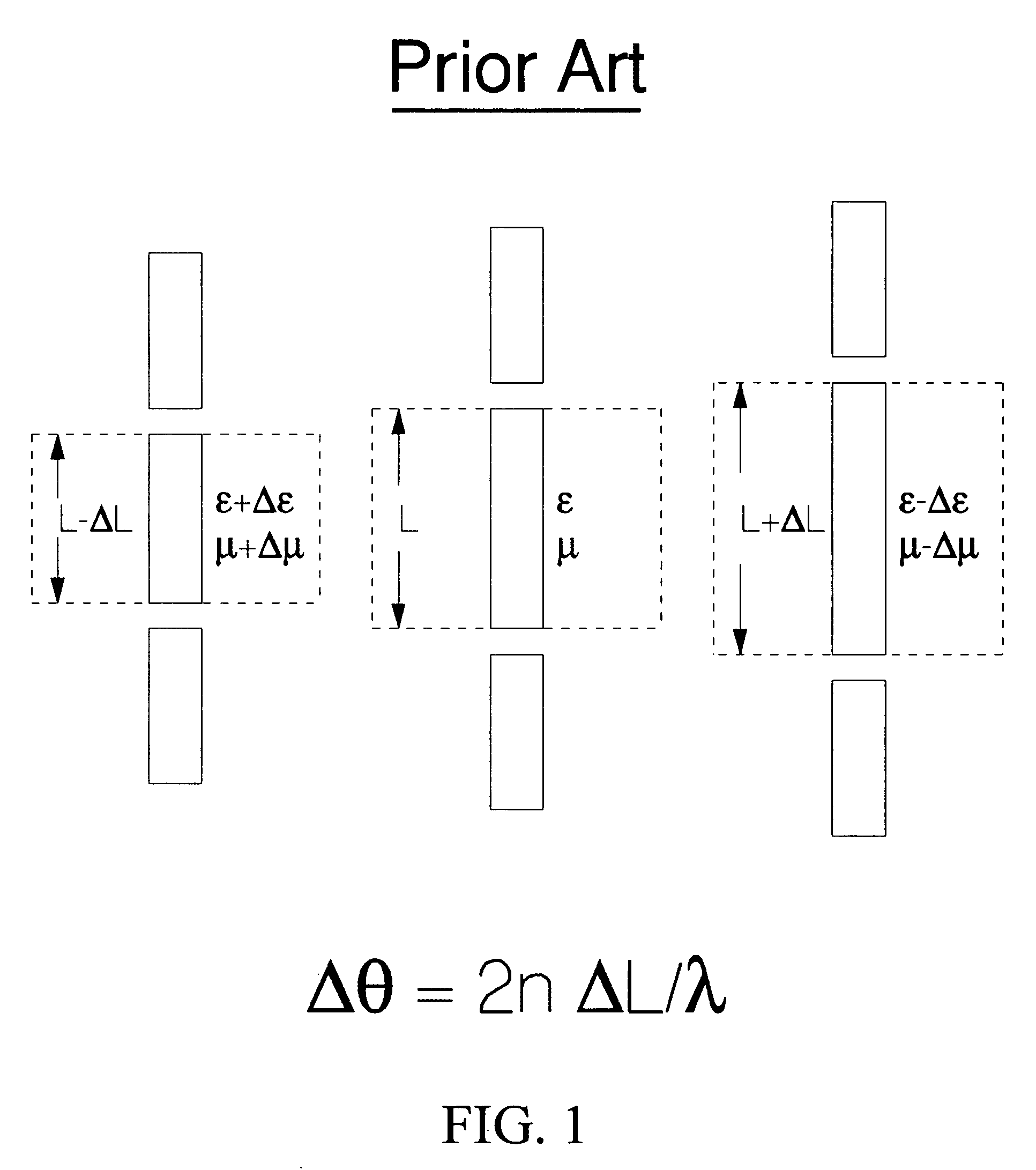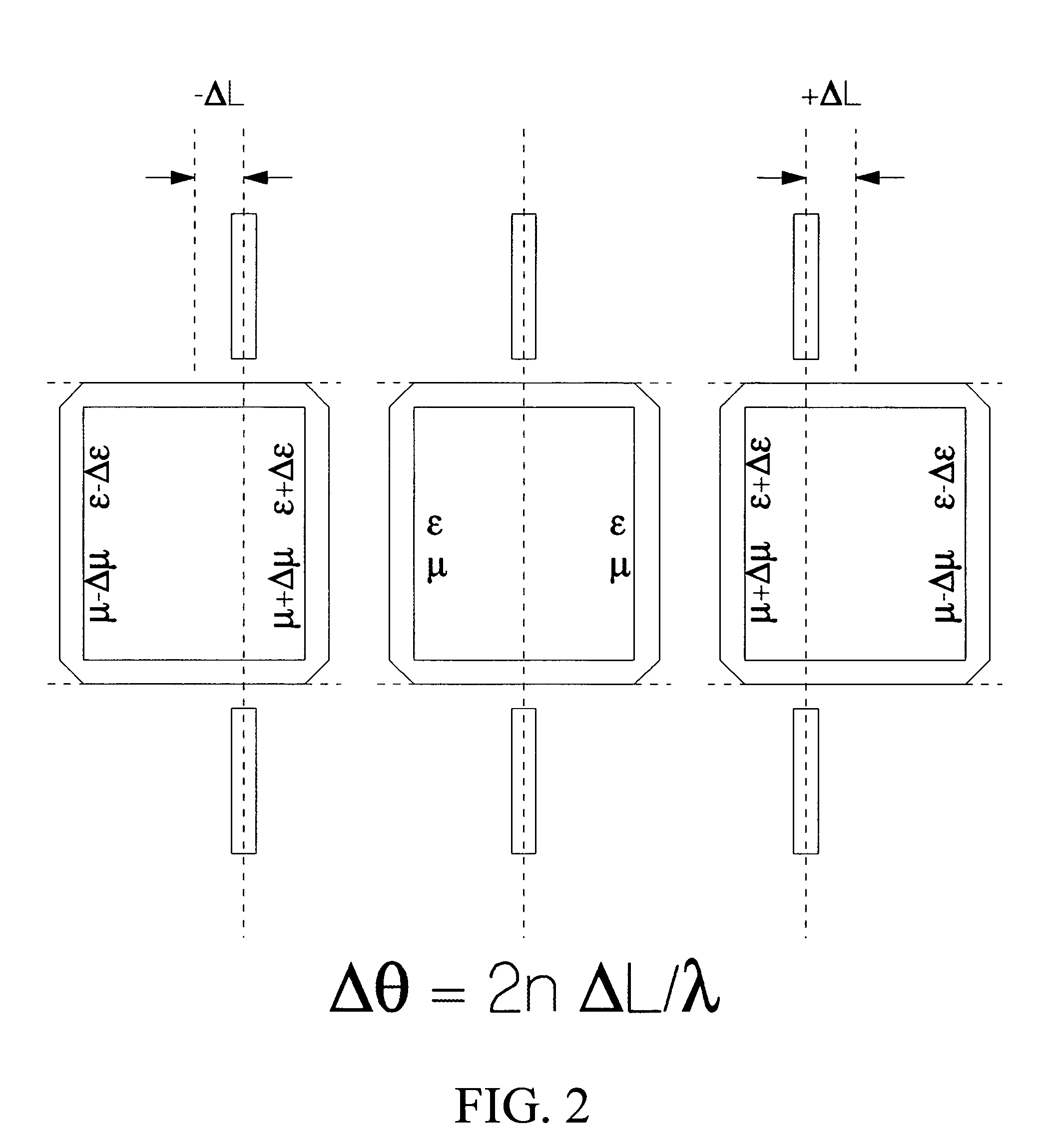Method and apparatus of obtaining balanced phase shift
a phase shift and phase shift technology, applied in waveguides, delay lines, resonators, etc., can solve the problems of generating radiation nulls, reducing the cost of beam forming in this manner, and increasing the cost of the antenna array system
- Summary
- Abstract
- Description
- Claims
- Application Information
AI Technical Summary
Benefits of technology
Problems solved by technology
Method used
Image
Examples
Embodiment Construction
Prior-Art Explanation:—FIG. 1
[0025]FIG. 1 shows the prior art that phase shifts are derived from a linear resonator supporting reciprocal wave propagation. As shown by the middle circuit of FIG. 1 a linear resonator of length L is characterized by the two electronic parameters ε and μ, denoting the capacitance per unit length and inductance per unit length, respectively. If these two parameters are changed via, say, electronic means, the electrical length of the linear resonator will change accordingly, resulting in a shorter or a longer resonance length, corresponding to the increase of ε and μ to ε+Δε and / or μ+Δμ, shown at left of FIG. 1, and the decrease of ε and μ to ε−Δε and / or μ−Δμ, shown at right of FIG. 1, respectively. The derived angle in phase shift is
Δθ=2n ΔL / λ, (1)
where ΔL denotes the change in electrical length of the resonator, λ is the wavelength, and n is the order of resonance, for example n=0.5 for half-wave resonance, and n=1 for full-wall resonance, etc. Howeve...
PUM
 Login to View More
Login to View More Abstract
Description
Claims
Application Information
 Login to View More
Login to View More - R&D
- Intellectual Property
- Life Sciences
- Materials
- Tech Scout
- Unparalleled Data Quality
- Higher Quality Content
- 60% Fewer Hallucinations
Browse by: Latest US Patents, China's latest patents, Technical Efficacy Thesaurus, Application Domain, Technology Topic, Popular Technical Reports.
© 2025 PatSnap. All rights reserved.Legal|Privacy policy|Modern Slavery Act Transparency Statement|Sitemap|About US| Contact US: help@patsnap.com



